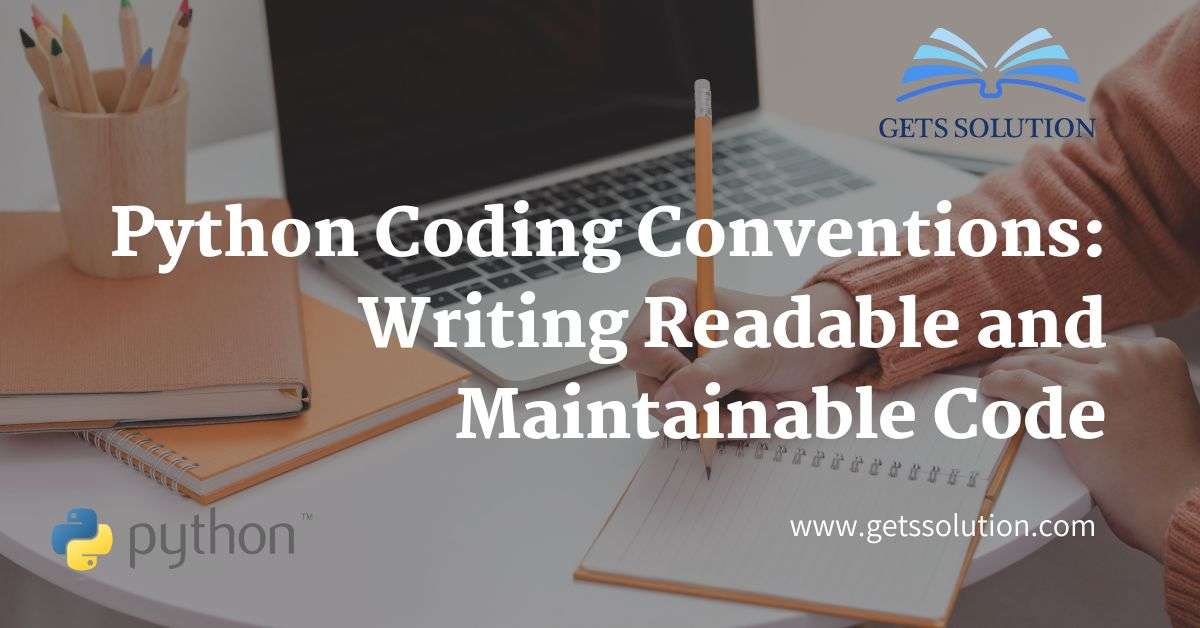If you’re a programmer, you know how crucial it is to write code that’s not only functional but also easy to read and maintain. Python, with its clear and elegant syntax, emphasizes the importance of coding conventions. In this article, we’ll delve into the world of Python coding conventions, exploring what they are, and why they matter, and providing you with practical examples to solidify your understanding.
Video Tutorial for You
Introduction to Python Coding Conventions
Coding conventions are a set of guidelines and practices that developers follow to write clean, consistent, and easily understandable code. They play a vital role in enhancing the readability and maintainability of your Python programs.
Why Follow Coding Conventions?
Following coding conventions offers several benefits. First, it improves code readability, making it easier for you and other developers to understand and navigate the codebase. Second, it promotes consistency, allowing different developers to work seamlessly on the same project. Moreover, adhering to coding conventions reduces the chances of introducing bugs and errors.
PEP 8: The Python Enhancement Proposal for Coding Conventions
PEP 8, the Style Guide for Python Code, is the go-to resource for Python coding conventions. It provides recommendations for various aspects of coding style and structure.
Indentation
Indentation is a fundamental aspect of Python’s syntax. PEP 8 suggests using 4 spaces per indentation level to ensure consistent and visually appealing code.
Naming Conventions
Descriptive and consistent naming is crucial for code clarity. Variables should be named in lowercase with underscores separating words (e.g., user_name). Class names should follow the CamelCase convention (e.g., UserData).
Import Statements
Imports should be placed at the top of the file and grouped in a specific order: standard library modules, third-party libraries, and your modules. This makes it easy to locate and manage imports.
Maximum Line Length
PEP 8 recommends limiting lines to a maximum of 79 characters. If a line exceeds this limit, you can wrap it using parentheses.
Writing Clean and Readable Code
Clean code is not just about following conventions; it’s about making your code as clear as possible. Here are some additional tips:
Organizing Imports
Import only what you need from a module to prevent clutter. For example, instead of from math import *, import specific functions like sqrt individually.
Using Descriptive Variable Names
Choose meaningful names for your variables that convey their purpose. A name like Total is better than t.
Comments and Documentation
While the code should be self-explanatory, comments can provide context for complex logic. Docstrings help generate documentation, making your codebase more accessible.
Example: Applying Coding Conventions in Python
Let’s consider a function that violates several coding conventions:
def c( x):
if x%2== 0: return True
else: return FalseBy refactoring it according to PEP 8 guidelines, we get:
def is_even(number):
"""
Check if a number is even.
:param number: The number to check.
:return: True if the number is even, False otherwise.
"""
return number % 2 == 0Tools for Enforcing Coding Conventions
To ensure your code complies with coding conventions, you can use tools like Flake8 and Pylint. These tools analyze your code and provide feedback on potential violations.
Common Mistakes to Avoid
While following coding conventions is crucial, it’s also important to avoid common pitfalls:
Overusing Comments
Comments are valuable, but too many can clutter your code. Focus on writing expressive code that doesn’t rely heavily on comments.
Neglecting Consistency
Inconsistencies in naming, formatting, or structure can make your code harder to understand. Be consistent throughout your project.
Best Practices for Collaborative Projects
When working with a team, effective collaboration is key:
Code Reviews and Peer Feedback
Regular code reviews help maintain code quality and catch potential issues early.
Continuous Integration and Automated Testing
Set up continuous integration pipelines that run automated tests. This ensures that code merged into the main branch adheres to coding conventions.
Conclusion
Python coding conventions are not just guidelines; they’re a set of principles that contribute to writing elegant, readable, and maintainable code. By following these conventions, you enhance your codebase’s consistency and make it easier for yourself and your team to build and maintain exceptional software.
FAQs
What are Python coding conventions?
Python coding conventions are a set of guidelines and best practices that developers follow to write clean, consistent, and easily understandable Python code.
Why are coding conventions important?
Coding conventions improve code readability, consistency, and maintainability. They also help prevent bugs and errors.
What is PEP 8?
PEP 8 is the Style Guide for Python Code, which provides recommendations for coding style and structure in Python programs.
How can I enforce coding conventions in my codebase?
You can use tools like Flake8 and Pylint to analyze your code and identify violations of coding conventions.
What are some best practices for collaborative coding?
Code reviews, peer feedback, and continuous integration with automated testing are essential for collaborative projects.

1 thought on “Python Coding Conventions: Writing Readable and Maintainable Code”